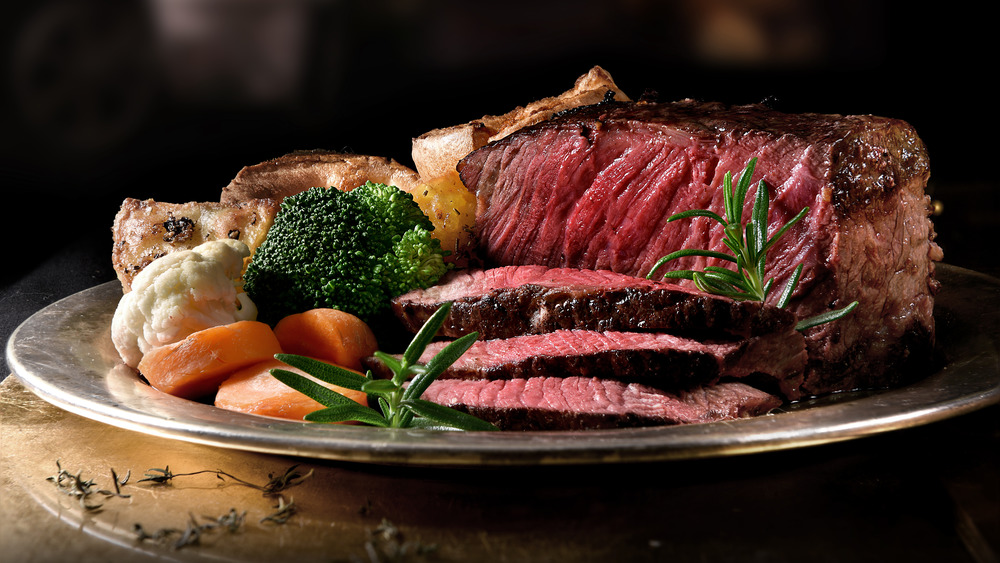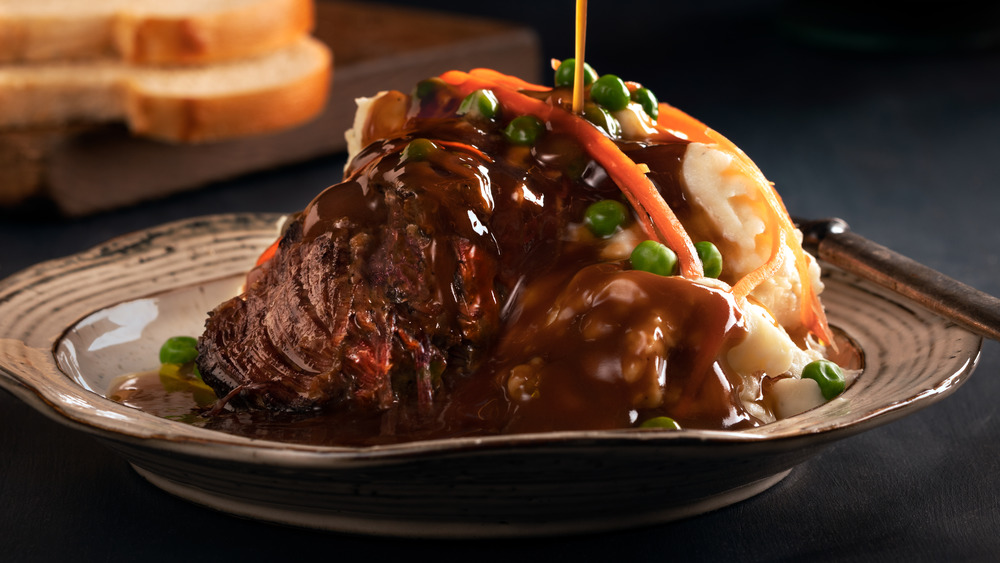The Pot Roast Rule You Should Never Break
While it's easy enough to get a golden brown crust on a chicken breast or pork chop, trying to manhandle a large cut like a pot roast can seem like more effort than it's worth. Who hasn't found themselves attempting to rotate a sizable piece of beef in a nearly-too-small pan, trying to get that perfect crust, splattering themselves with grease and wondering if it's all worth it? Well, according to Kitchn, no matter how tempting it may be to just pop that roast right into the oven without the browning battle, it's a step that should never be skipped.
Some believe that getting a sear on some meat helps to trap the moisture in and keep a dish juicy, which isn't quite true (via Kitchn). What the extra step does accomplish is simply an enhanced flavor. No matter how well you cook your roast, if you skip the browning step, it just won't be as good.
That perfectly browned exterior is courtesy of the Maillard reaction, which Modernist Cuisine cheekily says should be called "the flavor reaction." At a basic level, it's simply the process of meat proteins combining with sugars to create new molecules, which are the powerhouses behind that mouthwatering roasted aroma and flavor (via Ricardo Cuisine).
Browning like a champion
First thing's first, you want that pan hot, hot, hot! The surface temperature should be above 350 degrees Fahrenheit, ideally in the 400 to 450 range (via ThermoBlog). If you don't have any gadgets like infrared thermometers to check the surface heat, don't worry. The main point is, the minute that meat touches your pan, you should hear a satisfying sizzle.
Even if you opt to add some seasoning before browning, you want the exterior of your roast to be dry. Otherwise, when it hits the pan, the moisture on the surface will create steam, which essentially just boils the meat rather than creating that deep flavor (via Bon Appétit).
Not sure how to get those ends and random little bits of your irregularly-shaped roast? Dig out your tongs — they can help you rotate and twist the meat to ensure every inch of that exterior is deliciously browned (via Allrecipes).
The last step is to make the most of every little morsel lingering in your pan. Make things easy by deglazing in the same vessel that you browned your meat in. As Bon Appétit explains, deglazing just means adding some type of liquid to a piping hot pan to get all those little browned bits. While simply using broth is fine, Kitchn recommends raising your pot roast game even more by adding a splash of red wine or red wine vinegar, your preferred herbs, and a bit of tomato paste for a truly rich, decadent flavor.

